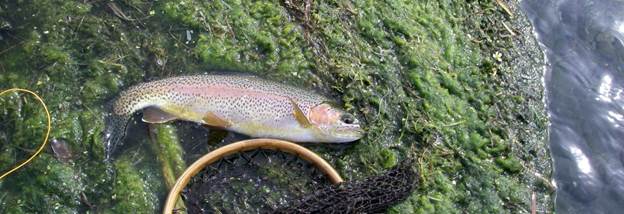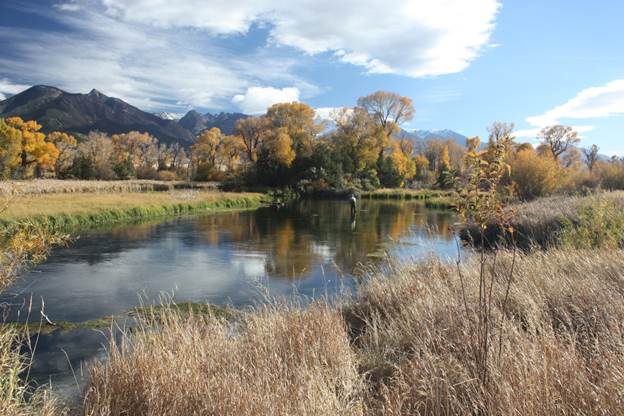BIG FISH FEVER
I think the urge to catch a truly big fish is something that has crossed the mind of every person that has ever gone fishing. I always presumed that it was part of the process of becoming an angler. First we just want to catch a fish, and then we want to catch as many fish as possible, then we want to catch a big fish, then lots of big fish and finally we just want to go fishing. There was always the angler that got stuck in one of those phases, but generally most anglers moved on from one phase to another until they arrived at the realization that just fishing is really the most enjoyable part. However, as I talk to professional guides and combine that with my personal observations it appears that the current crop of anglers are increasingly getting stuck on catching lots of fish and specifically lots of big fish. If you doubt that statement just check out the angling blogs and the videos that are posted on the Internet and you may have a change of opinion.
If you have fished the Bighorn River in Montana or the San Juan in New Mexico you are familiar with a practice called "Daisy chaining." The process is quite simple. It involves drift boats, a slow flowing river, and a long deep run. On the two rivers mentioned above it normally involves the angler or anglers lobbing a nymph rig with an attached indicator a short distance from the boat while the guide controls the drift to keep the flies moving at the speed of the current. When the indicator twitches the guide yells "strike" or something similar and the angler hooks up with a fish. Once landed and photographed the fish is released and the guide rows back up to the top of the run and repeats the process over the same run. This may happen several times and I have personally watch some drift boat anglers repeat this process for most of the morning on the Bighorn.
Now as a person that has been fishing for 65 years and fly fishing for 50+ years it's not something that is even remotely attractive to me, but I understand why it's done. First, it really works. A good productive hole can produce several nice trout and clients want to catch lots of nice fish. Secondly, it really doesn't take much skill on the part of the angler. The guide will set up your rig, and all you need to do is make a relatively short cast. The guide will keep the boat moving at the speed of the current and they will even tell you when to strike. They will quickly net the fish, remove the hook, let the angler admire it and perhaps take a picture. This fish and the many others that are caught during the day will be productive fodder for the conversations around the dinner table that evening.
Most of the guides that I know are capable anglers and guiding is their source of income. The more fish you produce for your client the more likely that they will return and the size of the tip at the end of the day will be a bit more generous. Many of the clients have only limited skills and lobbing [I hesitate to call it casting] a weighted nymph rig with an indicator that Stevie Wonder could see does not require much instruction or skill. Any angler that has spent time casting size 18 or smaller dry flies to trout that are rising amid a series of twisting surface currents on one of the big flats on a river like the Big Horn understands that it demands a certain degree of skill that is not to be learned in a few minutes before you start fishing. In addition, this type of fishing is unlikely to produce a large number of big fish during the course of a day. If number and size are the two factors that determine if a day of fishing is a success this type of fishing is unlikely to produce the desired results.
Since this type of fishing produces the desired results for many anglers it is unlikely that the practice will change anytime in the near future. Again, it is synonymous with our times when many people are looking for instant gratification with little skill involved in procuring it.
Big fish fever is also on the increase, especially among the young bloods that live, eat and sleep fly fishing and the older, well-heeled anglers with the expendable dollars that allows them to travel to exotic locations. On fishing blogs you can read such expressions as ripping lips, catching the hogs, and similar expressions. These are usually accompanied by images of huge fish; trout, salmon or even carp. Usually the fish, except for the carp, have been caught in some distant pace or on some exclusive private water that is open only to a select few. Now there is nothing wrong with chasing big fish however, the uninitiated angler that reads these accounts may come to presume that catching fish like these is the norm. Increasingly professional guides tell me that their clients are disappointed when the fish they are catching don't measure up to the fish they read about in the angling blogs and angling magazines. As a result they are disappointed when, in fact, they may be enjoying excellent fishing.

Recently I was fishing a nice run on a local stream where there was a number of trout rising to a moderate hatch of fall Baetis mayflies. I hooked, landed and released 3 or 4 rainbow trout, none of them more than 14 inches long. As the hatch began to fade I noticed one fish that was still feeding along the edge of a weed bed. The currents between me and my target were complicated but I finally managed a short float over the rising trout's position and was gratified with a take. Instantly the fish was airborne, and made a series of jumps that would have made a fresh run Atlantic salmon envious. That fish was never under control and after a series of jumps he threw the hook and was gone. I reeled my line and stood looking over the water. The yellow of the leaves from the cottonwood trees cast a golden glow over the scene and the fresh white snow on the nearby mountains framed it all into one beautiful picture. As I waded to shore I was reminded that is why I spend my time on trout streams.

The end of a perfect day
